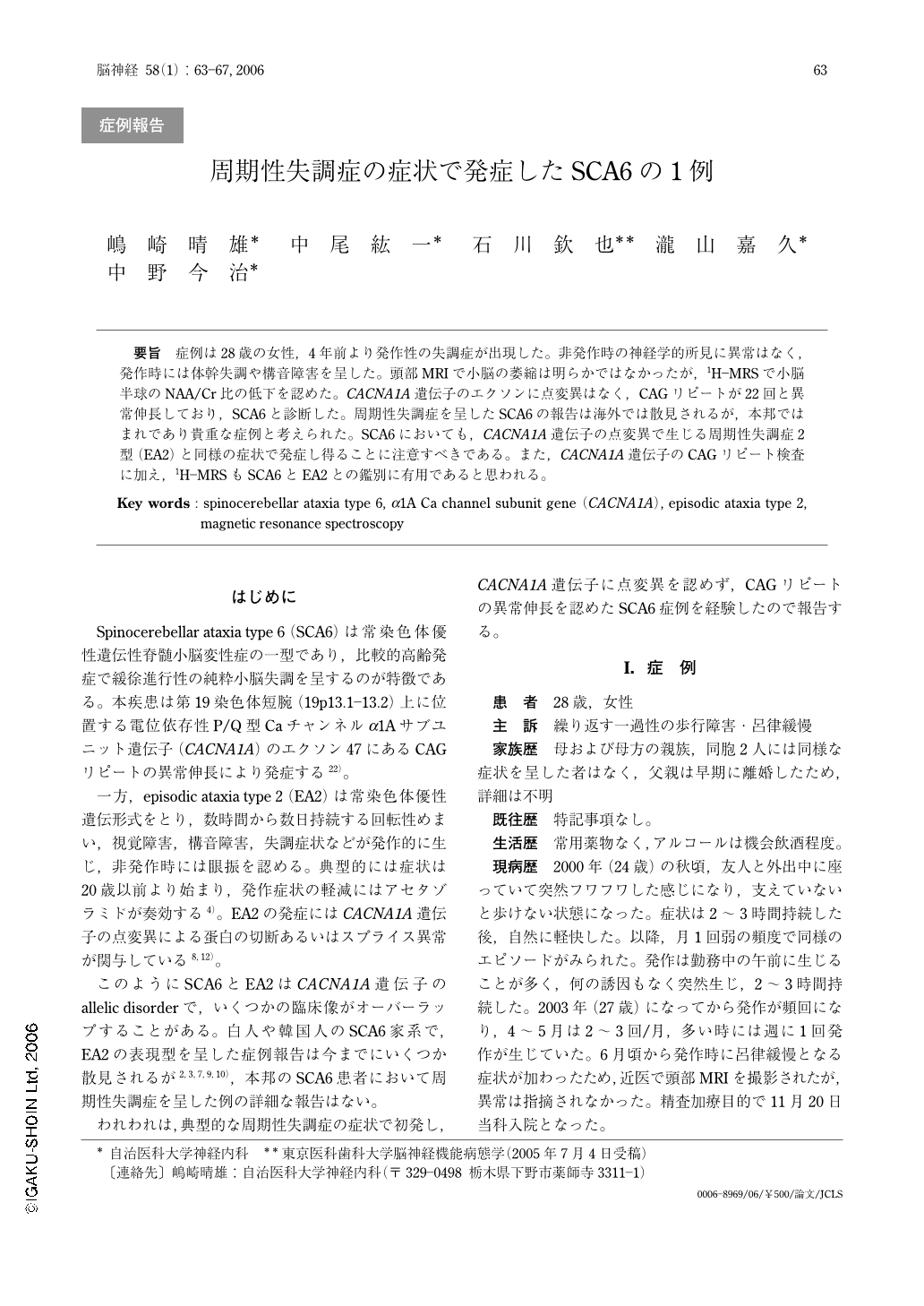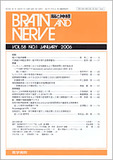Japanese
English
- 有料閲覧
- Abstract 文献概要
- 1ページ目 Look Inside
- 参考文献 Reference
症例は28歳の女性,4年前より発作性の失調症が出現した。非発作時の神経学的所見に異常はなく,発作時には体幹失調や構音障害を呈した。頭部MRIで小脳の萎縮は明らかではなかったが,1H-MRSで小脳半球のNAA/Cr比の低下を認めた。CACNA1A遺伝子のエクソンに点変異はなく,CAGリピートが22回と異常伸長しており,SCA6と診断した。周期性失調症を呈したSCA6の報告は海外では散見されるが,本邦ではまれであり貴重な症例と考えられた。SCA6においても,CACNA1A遺伝子の点変異で生じる周期性失調症2型 (EA2) と同様の症状で発症し得ることに注意すべきである。また,CACNA1A遺伝子のCAGリピート検査に加え,1H-MRSもSCA6とEA2との鑑別に有用であると思われる。
We reported a Japanese case of spinocerebellar ataxia type 6 (SCA6) with episodic ataxia type 2 (EA2) phenotype. A 28-year-old woman was admitted to our hospital because of episodic unsteadiness of gait and dysarthria for 4 years. Neurological examination revealed truncal ataxia and dysarthria during attacks, but no abnormal findings in interictal phases. A brain MRI showed no obvious cerebellar atrophy, whereas proton MR spectroscopy (1H-MRS) disclosed decrease of the N-acetylaspartate/ceatine (NAA/Cr) ratio in the cerebellar hemisphere. We identified the expanded 22 CAG repeats without a missense mutation in the CACNA1A gene. After one year from the discharge, her gait ataxia became gradually obvious even in the interictal phase. To our knowledge, although a few foreign papers had reported the SCA6 cases with EA2 phenotype, there is no particular report on such cases in Japan. 1H-MRS, in addition to CAG repeats analysis, might enable us to differentiate SCA6 from EA2, because the latter showed no decrease of NAA/Cr ratio in cerebellar hemisphere according to the previous reports.
(Received : July 4, 2005)

Copyright © 2006, Igaku-Shoin Ltd. All rights reserved.


